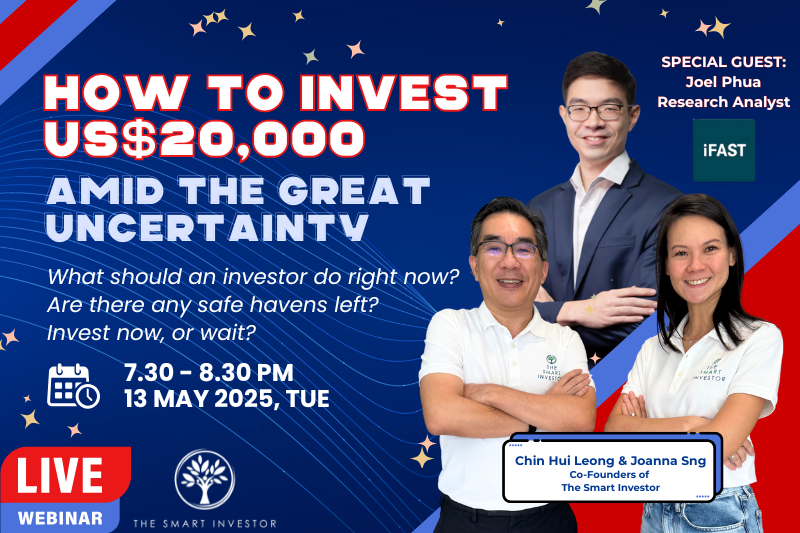When it comes to the Singapore REITs space, there are only two healthcare REITs to be found.
The first, Parkway Life REIT (SGX: C2PU), has posted an uninterrupted increase in its core DPU for more than a decade.
There’s also a good chance that the REIT can continue to post higher distribution per unit (DPU) in 2023 and beyond.
The second healthcare REIT is First REIT (SGX: AW9U).
First REIT faced a confluence of challenges early last year but has managed to right the ship by launching a massive rights issue and refinancing its debt.
For the first nine months of 2022 (9M2022), First REIT posted a 39.2% year on year jump in total revenue to S$80.9 million.
Its DPU inched up by 1.5% year on year from S$0.0195 to S$0.0198.
With the REIT posting a slightly higher DPU, we explore if this trend can continue into 2023.
The 2.0 growth strategy
Late last year, First REIT announced a bold new strategy aptly titled “2.0 Growth Strategy” where the REIT manager unveiled new plans for the healthcare REIT.
The first step, which was already concluded by the sponsor, helped to restructure the hospital master leases and recapitalise the REIT.
A total of S$260 million of debt was also refinanced successfully.
In the same announcement, First REIT also announced its maiden acquisition of 12 Japanese nursing homes from its sponsor.
This move was made to diversify into developed markets and position the portfolio for further growth.
The acquisition was DPU-accretive, raising its fiscal 2021’s first half (1H2021) DPU by 0.8%.
Furthermore, it helped to diversify First REIT’s asset base into three countries, with the Indonesian portion diluted from 96.4% to 72.9%.
The developed market segment, comprising both Singapore and Japan, took up more than a quarter of the portfolio.
A more favourable lease structure
Aside from the transformational acquisition above, First REIT has also restructured its master leases to make them more favourable and to guard against downside risks.
For its Indonesian assets, there is either the higher of the base rent escalation of 4.5% or 8% of the hospital’s gross operating revenue in the preceding financial year.
Its Japanese properties are subject to upward rental negotiations every two or three years based on the consumer price index increase and inflation.
For the Singapore assets, they incorporate a fixed base rental with annual increments of 2%.
Across all its assets, the cost of utilities is managed by the master lessee in mostly triple net lease arrangements, thereby protecting the REIT from a sharp rise in utility cost due to inflationary pressure.
Further acquisitions and capital recycling
After its initial acquisition of the 12 nursing homes, First REIT went on to acquire another two Japanese freehold nursing homes from external parties.
The result of these two acquisitions is that the REIT now has a quarter of its assets in developed markets, along with increased tenant diversification.
Its target is to have more than 50% of its assets under management (AUM) in developed markets in five years.
This mandate means that the REIT manager will likely focus on Japan or other developed markets such as Australia and Europe for future acquisitions.
Elsewhere, First REIT has also earmarked two Indonesian assets for divestment as part of its capital recycling policy to sell off non-core, non-healthcare assets.
The first, Siloam Hospitals Surabaya, was divested in September at more than double its original purchase price.
The second, Imperial Aryaduta Hotel & Country Club, has been marketed for sale that could take place next year.
As of 30 September 2022, First REIT’s portfolio comprised 15 assets in Indonesia, 14 nursing homes in Japan, and three nursing homes in Singapore, for an AUM of S$1.2 billion.
A robust capital structure
First REIT also completed refinancing half its debt last month and pushed the maturity of this tranche to 2026.
The REIT is buffered against rising interest rates as the earliest refinancing will be in 2025 for 23.3% of its total borrowings.
Moreover, around 61.7% of its loans are on fixed rates, with another 26.9% of its borrowings on relatively stable rates.
With a gearing ratio of 35.6%, First REIT has sufficient debt headroom to tap on for further yield-accretive acquisitions.
Get Smart: Keep on pivoting
It’s still early days, but it seems that First REIT is headed in the right direction.
The acquisition of 14 Japanese nursing homes has added diversification to its portfolio and also helped it to grow its DPU, albeit slightly.
2023 will be a pivotal year as all eyes will be on the REIT to see if it can continue to pivot its portfolio towards developed markets.
It may take a while for the results to flow through to a higher DPU, so investors will need to be patient and continue to monitor the REIT for news flow.
Is it a good time to buy into Singapore REITs? If you’ve thought about it, then our latest REITs guide will be an essential read. This exclusive pdf report shows you why REITs are still excellent assets, what sectors to look out for and how to find good REITs today. The info inside can help you build a solid retirement portfolio. Click here to download it for FREE.
Follow us on Facebook and Telegram for the latest investing news and analyses!
Disclaimer: Royston Yang does not own shares in any of the companies mentioned.




